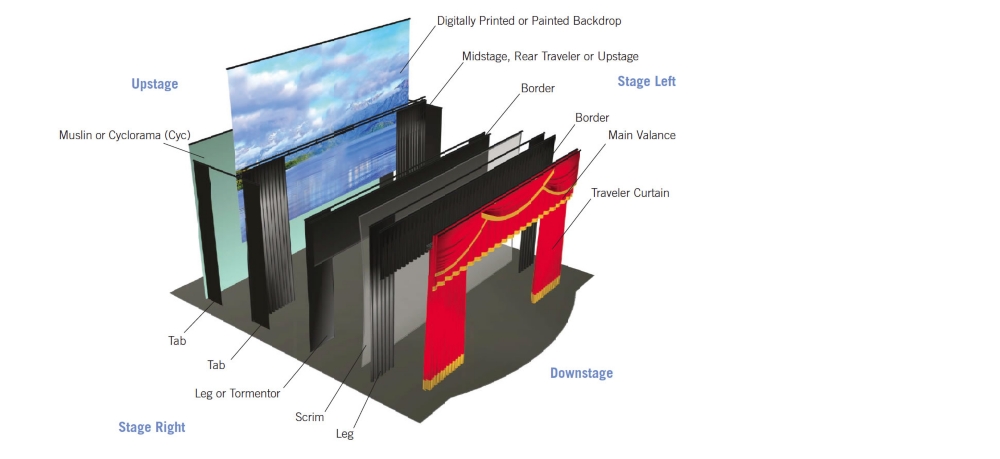Stage Layout
Main Curtains (also called Proscenium, Act, Grand, Front or House) refer to the full height and valance curtains that are closest to the Proscenium opening. They are normally used to open and close the view of the stage for the audience.
Masking Curtains are typically black and designed to mask audience sight lines.
Backdrops are usually sewn flat to create a flat surface for painting, digital images or projection.

Main Curtains
- Main Valance or Teaser
- Main Traveler Curtain
- Tab (Tableau) Curtain
- Austrian Curtain
- Venetian Curtain
- Venetian Contour Curtain
Masking Curtains
- Borders
- Legs or Tormentor
- Midstage or Rear Travelers
- Tabs
Backdrops
- Digitally Printed or Painted Backdrop
- Scrim
- Muslin or Cyclorama (Cyc)
- Projection Screen (not shown)
- ShowLED Star Drop (not shown)
Show less

